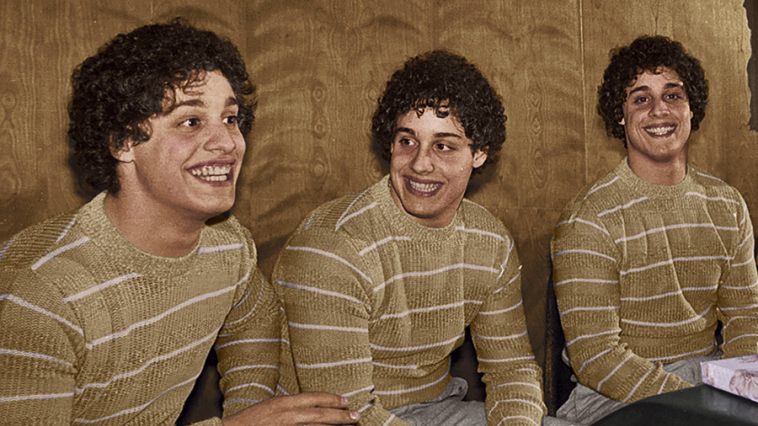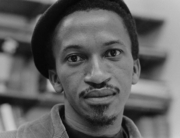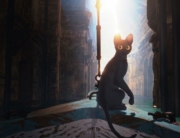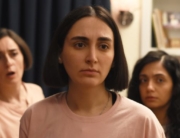![]() This engrossing documentary opens by introducing 56-year-old Robert Shafran, and does he ever have a compelling story. In 1980, on his first day away at college in upstate New York, he was repeatedly mistaken for another student named Eddy, who had clearly been a big man on campus the prior year. Robert’s new roommate also mistook him for Eddy, but soon they pieced together that Eddy Galland was Robert’s identical twin separated at birth. The film subsequently reenacts the impromptu, adrenaline-fueled road trip to Eddy’s house with actors, but it’s the real-life Robert and his ex-roommate speaking in the present-day that really sells the excitement.
This engrossing documentary opens by introducing 56-year-old Robert Shafran, and does he ever have a compelling story. In 1980, on his first day away at college in upstate New York, he was repeatedly mistaken for another student named Eddy, who had clearly been a big man on campus the prior year. Robert’s new roommate also mistook him for Eddy, but soon they pieced together that Eddy Galland was Robert’s identical twin separated at birth. The film subsequently reenacts the impromptu, adrenaline-fueled road trip to Eddy’s house with actors, but it’s the real-life Robert and his ex-roommate speaking in the present-day that really sells the excitement.
Cut to photographic evidence of the genuinely heartwarming moment in which the long-lost siblings finally meet in the flesh. Not surprisingly, the story gets picked up by a major newspaper, whereupon things only become more unbelievable as it turns out that the two aren’t actually twins but triplets, when a third brother named David Kellman makes contact. The film includes home video footage of the first time all three are together as adults, in which the chemistry between them appears instant, as they not only look alike but move very similarly as well. For his part, director Tim Wardle scores this section with rousing music to maximize the emotional impact.
The film looks back at the media circus that erupts around the brothers, but as they’re blowing up into celebrities, there remains the question of why the adoption agency they’d been placed with chose to separate them as newborns. What’s more, the siblings were each placed in households of very different economic means. Was that a coincidence? In interviews, the surviving adopted parents claim they were never told that their child was a triplet.
Wardle first wades into darker territory by exploring how each of the three main subjects likely suffered from separation anxiety as infants, which led to instances of self-harm. Overall, the narrative adeptly balances these unsettling revelations, which the public never had any knowledge of, with the at-times hilarious tales of the brothers’ hedonistic escapades in 1980s New York City as the triplets regularly rubbed elbows with the rich and famous.
Despite being so alike, the three also have different personalities, temperaments, and senses of humor, which become clearer over the course of the film. It’s a shame we do not get to know better the women they eventually married—if only to find out how closely aligned their taste in partners was—but there is a funny sequence in which their wives claim they got the best of the three brothers.
But from the beginning, it’s impossible not to notice one of the siblings is missing, and there’s a growing sense of dread as the film slowly builds toward the reason why. Along the way, we are also introduced to Pulitzer Prize–winning author Lawrence Wright, who, in a parallel story line, uncovers a possible motive for why the triplets were separated at birth.
The movie moves in an unexpected direction, one that raises that age-old debate regarding human development: Is nature or nurture the more dominant force? The audience is left to make its own determination, but by the end, we’ve spent enough time with the brothers to see they didn’t end up as complete clones of each other. The differences between them had to come from somewhere, and in exploring the source, the film gets to the heart of something profound about its three identical strangers, and the rest of us as well.







Leave A Comment